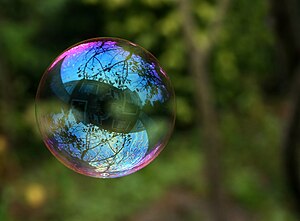Difference between revisions of "W1352 Bubble Sort"
From Coder Merlin
| Line 1: | Line 1: | ||
[[File: | [[File:Reflection in a soap bubble edit.jpg|thumb|link=|Reflection in a Soap Bubble]] | ||
== Background == | == Background == | ||
* Read [https://en.wikipedia.org/wiki/Bubble_sort Bubble Sort] (Wikipedia) | * Read [https://en.wikipedia.org/wiki/Bubble_sort Bubble Sort] (Wikipedia) | ||
* View [https://www.youtube.com/watch?v=gaC4MKqn41g Bubble Sort 1- Algorithm] (YouTube) | * View [https://www.youtube.com/watch?v=gaC4MKqn41g Bubble Sort 1- Algorithm] (YouTube) | ||
* View [https://www.youtube.com/watch?v=18OO361--1E Bubble Sort Algorithm] (YouTube) | * View [https://www.youtube.com/watch?v=18OO361--1E Bubble Sort Algorithm] (YouTube) | ||
== Quiz == | |||
<quiz shuffleanswers=true display=simple> | <quiz shuffleanswers=true display=simple> | ||
{ | { | ||
| Line 115: | Line 99: | ||
</quiz> | </quiz> | ||
== Exercises == | |||
Revision as of 22:55, 29 March 2020
Within these castle walls be forged Mavens of Computer Science ...
— Merlin, The Coder
Background[edit]
- Read Bubble Sort (Wikipedia)
- View Bubble Sort 1- Algorithm (YouTube)
- View Bubble Sort Algorithm (YouTube)
Quiz[edit]

